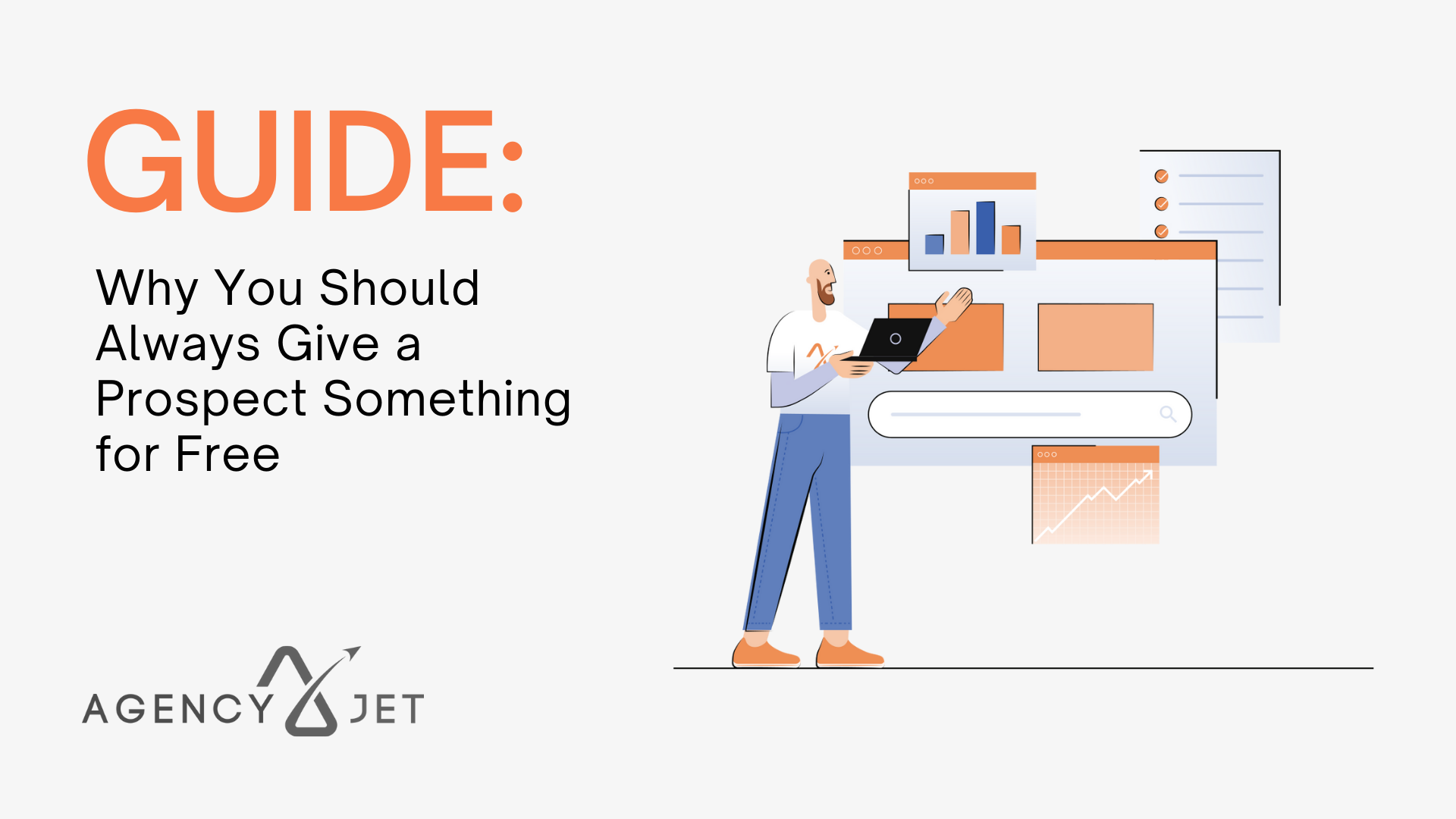3 Easy Steps To Improve Your Email Drip Campaigns
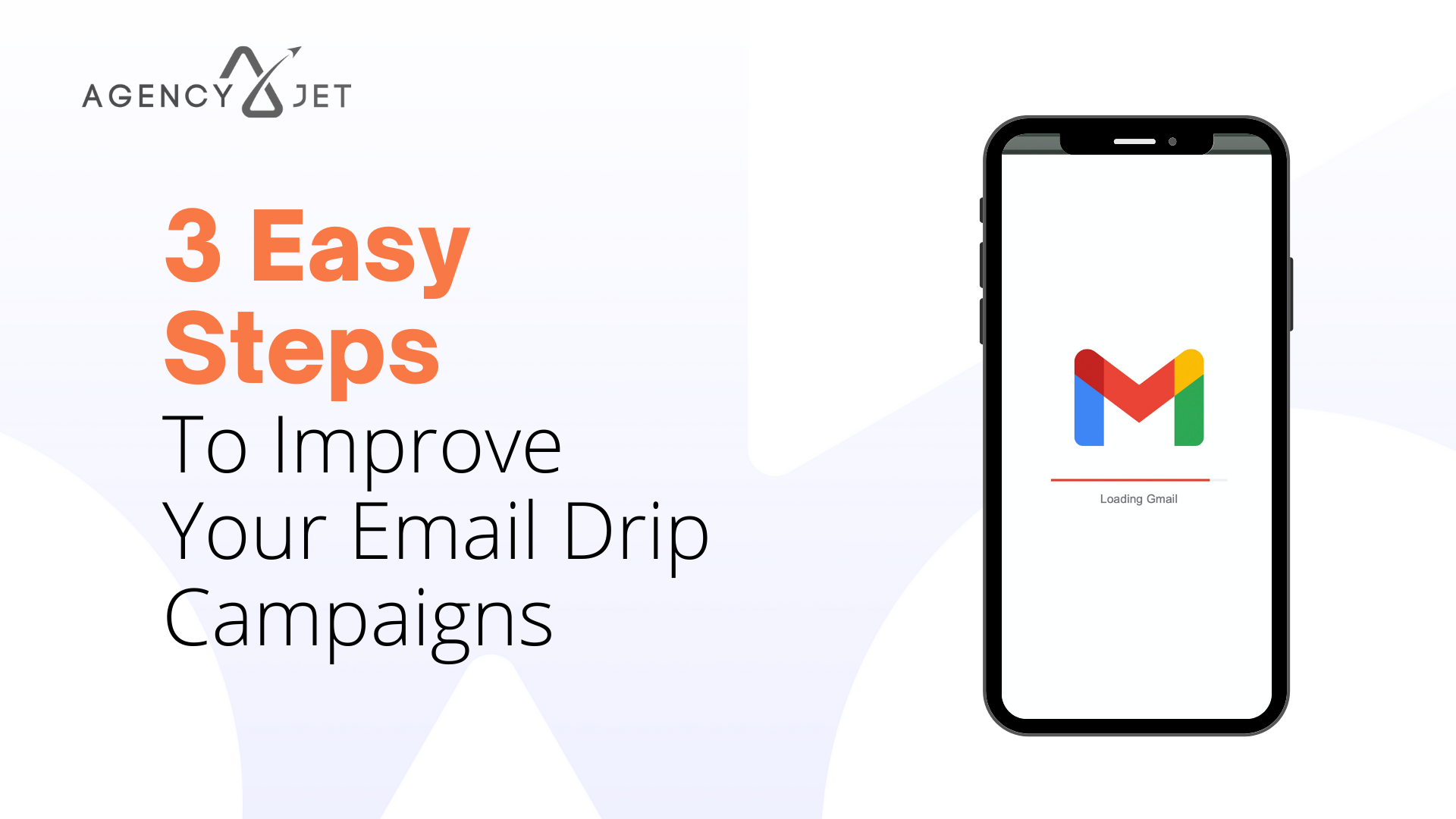
Email is one of the digital marketing tools that every small business owner should be taking advantage of.
It can be one of the most powerful and persuasive tools to generate sales, as long as you know the right strategies and tactics to utilize it. When it comes to email marketing, you can never go wrong with implementing an email drip campaign.
These drip email campaigns consist of a series of emails that are automatically triggered by time or based on a user action. They’re a great way to send out order updates, notify users about items left in the shopping cart, announce news about your brand, or simply check up on your customers to see how they are liking your products so far.
Does that sound familiar?
You may even be practicing drip marketing as we speak. If that’s the case, then perhaps you’re wondering why you aren’t getting the outcome you expected.
Even if you're new to email marketing, you've probably heard about MailChimp. Here's their guide to drip marketing.
In this blog, we’ll be helping you learn all about drip campaign emails and email automation. We’ll talk about what they are, how they’re used, and give resources and recommendations on how you can create your own email drip campaign or improve your existing one.
Read on to learn more.
What Is an Email Drip Campaign?
An email drip campaign is a series of automated emails that are sent out to a brand’s customers based on a set timeline or certain user interactions. Each series contains a set of pre-written emails that can be personalized with specific details such as the customer’s name, their orders, and other details that may apply to the purpose of the email.
Here are some of the most common email drip campaign examples used today:
- Abandoned items in cart
- New orders
- Opt-in actions (registrations, sign-ups, joining a community)
- Customer service and communication
- News and announcements
The main purpose of effective drip campaigns is to help a brand connect with their audience. Through these interactions, the brand can improve customer retention and encourage them to make another purchase, help them resolve issues, ask for feedback, and much more.
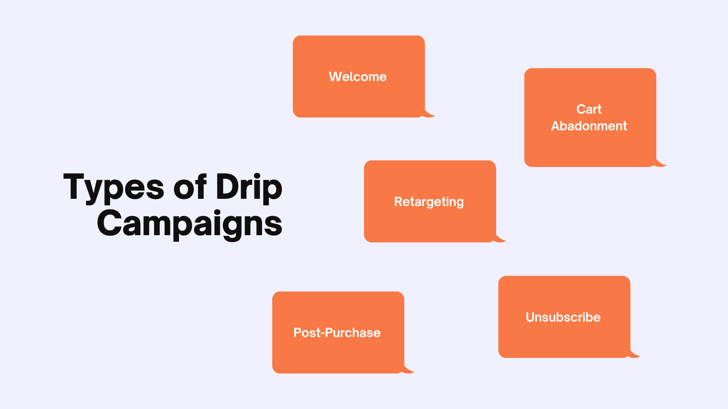
A business revolves around its loyal customers and their purchases, so email drip campaigns are one of the best methods to establish trust with their audience and encourage them to continue supporting your brand.
However, does it actually work?
Based on a report by Liana Technologies, 68.5% of digital marketers have seen an improvement in targeting since they implemented drip marketing campaigns, while 45.9% have mentioned that it has enhanced their customer experience.
In terms of sales, Campaign Monitor has discovered that utilizing targeted emails has resulted in a 760% increase in their revenue.
As we’ve mentioned before, email drip marketing campaigns won’t work unless they’re utilized properly. Like other digital marketing strategies, you will need to find the ideal methods that can guarantee that your campaign is foolproof and effective.
Although that may sound a bit intimidating, all it really takes is three easy steps.
Here’s what you need to do to enhance your email drip campaign.
Step 1: Map the Campaign Out
Before anything else, you need to visualize what email drip campaign ideas you want to go for.
You can start by figuring out the purpose behind your campaign. What are you hoping to achieve by the end of your email drip campaign? Are you looking to reel in more conversions and sales? Are you building up momentum for your next big launch?
Once you’ve set your goals, everything else will naturally follow.
As a time and action-based series, the efficacy of an email drip campaign relies heavily on timing and structure. This is known as the drip email sequence or drip campaign sequence.
You can begin planning out your campaign by creating a visual chart or a map to effectively visualize how many emails you will need to produce, which situations should trigger an email, and what course of action you need to take based on the customer’s activity.

This ensures that your email drip campaign stays organized and increases clarity among your team to avoid misunderstandings. It also ensures that you have a plan and appropriate response for every situation.
You can do things the traditional way by drawing your own map by hand and pinning it to your workplace bulletin board for everyone to see. However, we recommend using software or tools because it helps streamline the process and comes with a lot of useful features.
For example, Lucidchart allows you to create flowcharts to share with your sales team and marketing teams. It has a user-friendly interface, so you can create a fully-functional chart within just a few clicks.
Aside from being a tool for your email drip campaigns, it also offers charting options to help you delegate tasks and track your progress.
If you’re looking for more convenient solutions, then software like SmartDraw and HubSpot could be the best option for you.
These two tools help users streamline the mapping process by providing pre-made templates for charts and diagrams. All you need to do is choose your desired layout and begin filling it up with your email drip campaign timeline and information.
Once you’ve finalized your flowchart, you can begin setting up the actual campaign.
Step 2: Personalize the Email Drip Campaign
This step is vital in ensuring that your email drip campaign delivers good results. One of the most defining aspects of a drip campaign is that it is personalized.
According to ActiveTrail, personalized emails are responsible for 58% of a business’ total revenue. If you’ve only got one generic email marketing drip campaign running, then that is a key factor to why you may be generating poor numbers.
Each email drip campaign should be unique and appropriate to the user’s activity. They should offer answers and solutions to what a user needs. All of these responses should be given exactly when they need it, otherwise your audience won’t find it relevant enough to interact with or even open.
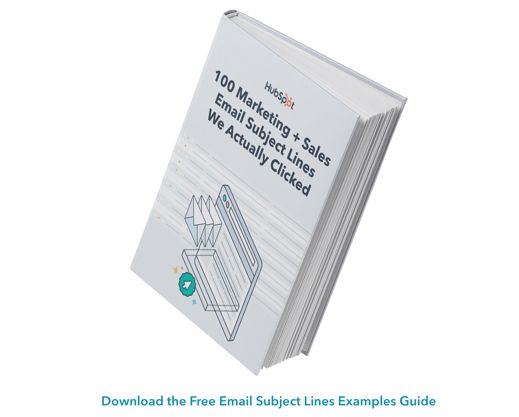 Each email subject line should be super catchy too. HubSpot put together a guide to help with that.
Each email subject line should be super catchy too. HubSpot put together a guide to help with that.
You can identify what a customer needs based on how they interact with your platforms.
If they subscribe to your blog, then your emails should revolve around providing helpful resources rather than promoting your products.
If they interact with a quote, then this is the perfect opportunity to inform them about any promos, discounts, or sales that you may have at the moment.
If they opt-in for a demo of your product and services, then you can provide resources and tutorials that will help them utilize it more efficiently.
By utilizing different kinds of drip campaigns for every situation, you are effectively improving users’ customer experience, establishing your credibility as a service, and obtaining more opportunities to promote and sell your products.
With every new drip-based strategy you create, take a look back on step one to map out your plan. It’s better to have a flowchart for each campaign so that you can come up with more curated content to improve your targeting, the quality of the email content and personalization tactics.
Step 3: Create a Series
An email series (also called an email sequence) is the next and final step in the email drip campaign process.
Once you’ve finalized all the details for your campaigns, it’s time to finally implement them. An email series is the part of the drip campaign that actually contains the emails you will send out. It’s referred to as a series because all of the emails will revolve around one main topic or purpose.
It’s meant to provide subscribers with extensive information about a certain topic and keep them engaged enough to support your brand.
This step goes hand-in-hand with step two. While the second step aims to figure out what type of content a user needs to see, step three provides it.
Once your prospective customer or lead has engaged with your platform, they will begin receiving a series of emails that are related to their initial purpose for opting in. For example, your lead signed up for a demo of your products. From there, you can begin sending an email series that breaks down how to use it. The topics included may range from how to use your product, the benefits, how it’s made, and more.
The content of your email series should be engaging and informative. You need to hook your readers in from the moment they see your email in their inbox.
Creating a creative and eye-catching subject line is one of the best ways to do this. In addition, emails with personalized subject lines are also 22% more likely to be opened by a customer.
As for the body of the email, you’ll want to get creative.
You can include relevant media in your emails, like images, infographics, and videos. These should reflect the purpose of your emails while also representing your brand’s ideals.
Try to keep it balanced and don’t add too much media in, otherwise it may take a while to load. This could backfire on you, as 75% of users are more likely to delete or ignore an email if it takes more than five seconds to load.
By mapping out your email marketing campaigns, personalizing them and letting your potential customers know that these emails will be part of a series, you'll be increasing the likelihood your conversion rates and click-through rates go up, that you'll land in the prospects' inbox at the perfect time and that you'll be supplying the exact content they need based on their initial request.
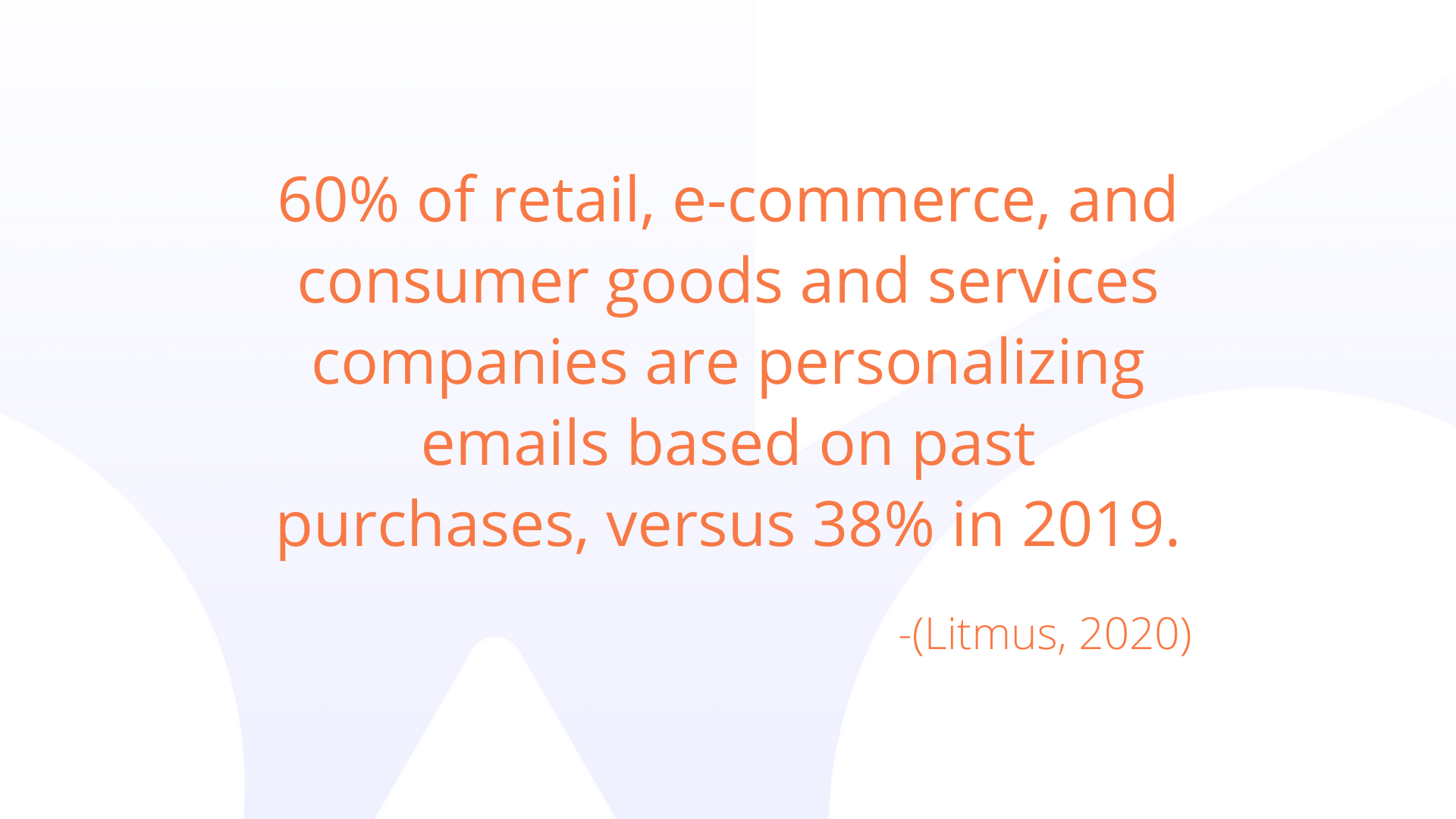
Frequently Asked Questions
How many emails should be in a drip campaign?
It all depends on you and your business. HubSpot says that you shouldn’t be sending more than 5 emails per month if you’re a B2B company. If you’re a B2C company, then that number is more flexible. The typical email drip campaign templates contain around 4 to 11 emails. However, the most important thing about the campaign isn’t the number of emails but how often and when you send them out.
Sending emails too frequently may cause your audience to feel overwhelmed or annoyed, that's why drip sequence is so important. Four to 14 days is a good timeline to implement. Contact them frequently enough so that your presence in their inbox will seem refreshing and interesting. Give them space between emails, but not too much so they won’t forget what your business is.
Do email drip campaigns work regardless of your industry?
An email drip campaign will work for every business as long as you’re reaching your target audience. Matching the content with the audience that needs it is a vital step in creating a successful drip campaign. This is why personalization is such a big part of this form of digital marketing. You need to capture the perfect tone and content when you are speaking to your target audience. Otherwise, your content will not seem authoritative or relevant enough for them to keep working with your brand.
For this to work, you’ll need to try putting yourself in your audience’s shoes. For example, do you think a manufacturing company would find it relevant if you started talking about the latest TikTok trends in your email? Nope. Ask yourself these three key questions:
- Why did my audience opt in?
- Who is my audience?
- Based on their industry, what type of content would my audience want?
Instead of talking about the latest TikTok trend, you can start talking about the latest marketing trends in their industry before transitioning into the topic of how you can help them. The tone of the message is also important. If you’re talking to companies, then you will need to take on a more formal and professional approach. If you’re talking to a customer, then you can get away with a more engaging and relaxed tone. Overall, it’s all about providing interesting and relevant content that your audience can relate to.
What are some of the best email drip campaign platforms?
There are many helpful resources and platforms that you can utilize, depending on what you need. Here are some of our top picks for email marketing software.
- Mailchimp - Free and entry-level tool for beginners. This tool allows you to connect with up to 2,000 subscribers and send 10,000 emails for free.
- Flodesk - Offers a user-friendly and stress-free interface. One of the best options if you’re looking for simple but effective email campaigns.
- ActiveCampaign - If you’re tech-savvy or have an in-house IT team, then you can gain access to more innovative and advanced email marketing automation with this platform. It also enables customers to access any live chat plugins directly from the email.
- Klaviyo - Helps you determine the efficiency of your email marketing strategy through testing and analytics. This platform allows you to view data like your bounce rate, open rate, clickthrough rate, and many more.
Here's a cost comparison of some of these provided by sendinblue:
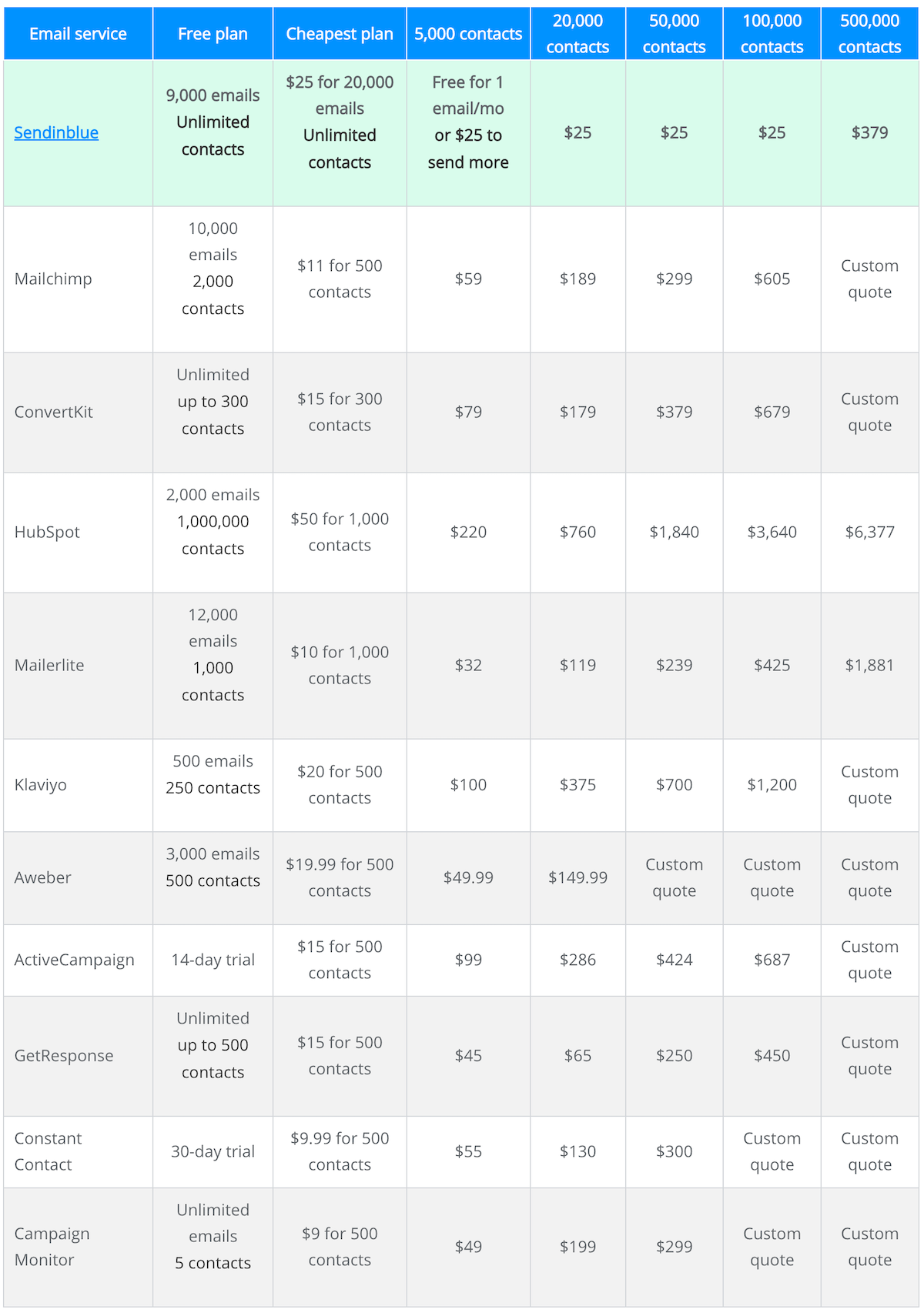
What are other digital marketing strategies that support email drip campaigns?
An email drip campaign tool can work with many other digital marketing strategies. One of the more direct options is social media marketing.
Social media platforms like Facebook provide tons of opportunities for advertisement. You can use it to advertise an opt-in link that will eventually lead your customers into your email drip campaign.
Other strategies like SEO may not be as direct but can still play a role in the process nonetheless. If your platforms gain more visibility through SEO, then it’s likely that more users will discover your brand and opt-in with your services.
Not only should you be reaching out to prospects with drip campaigns, you should be giving them something for free. Click the image above to read all about the benefits of free sample marketing.
Conclusion
Once all three steps have been implemented, all there’s left to do is monitor your progress. Are your email campaigns generating the results you expected? What else can you do to improve your click rate or get your audience to open your messages?
Take note of everything that happens through your current campaigns and use it as reference for future ones.
Email marketing is only one out of the many digital marketing opportunities that small businesses utilize today.
There are still so many strategies out there, like SEO, digital advertising, social media marketing, and more. You can learn more about email marketing and all of these other digital marketing strategies by checking out our blog.

